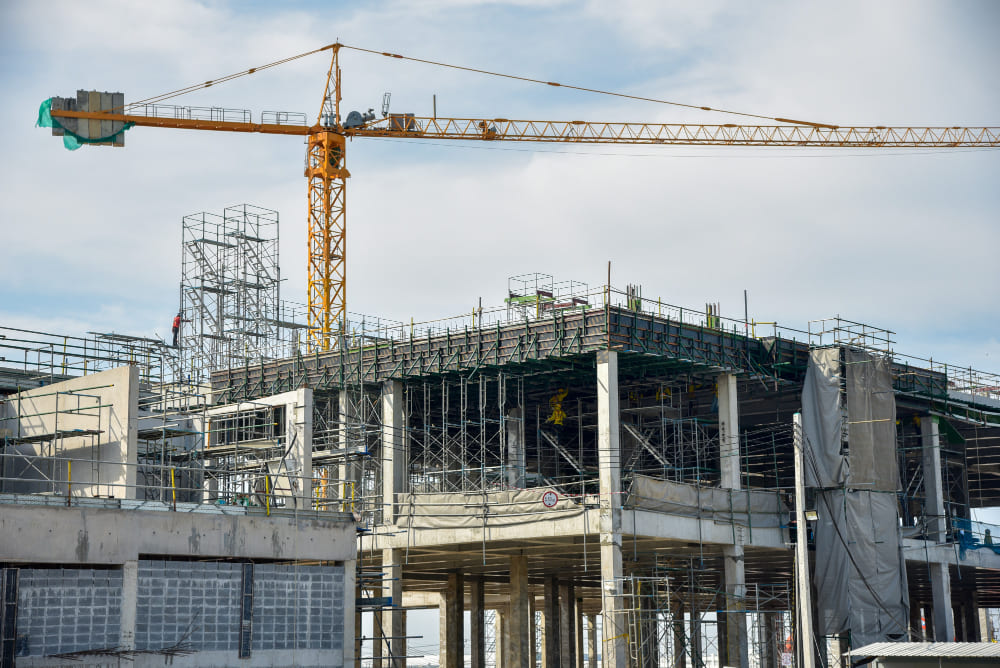Navigating the Complexities of Indian Property Laws
Indian property laws are inherently complex, as multiple acts and legislations often apply simultaneously to a single transaction. At MNA & Associates, we have the expertise to navigate these intricacies efficiently. Our services include:
Comprehensive due diligence, such as title verifications and transaction structuring.
Preparation of documentation for conveyancing, mortgages, lease/license agreements, and redevelopment of properties.
Drafting and finalizing development agreements for various types of projects, including:
33(10) of DCR (slum redevelopment projects),
33(5) of DCR (MHADA projects), and
PMAY (Pradhan Mantri Awas Yojana) projects.
Providing advice and compliance support under the Real Estate (Regulation and Development) Act, 2016 (RERA).
The real estate sector encompasses a broad range of stakeholders, including landlords, developers, builders, real estate agents, tenants, and buyers. Its activities extend beyond transactions to include housing and construction, making it a vital component of the economy.
Key Central Laws Governing Real Estate:
Services Offered

1. Title Investigations
2. Title Certificate
3. Definitive Agreements
- Memorandum of Understanding
A memorandum of understanding (MOU) is a starting point of negotiations between multiple parties to signal the intent of doing business or coming to an agreement. It simplifies a legal contract by establishing the key objectives and goals.
- Term Sheet
A term sheet is a written document that outlines the main terms and conditions of a real estate deal between a potential buyer and seller. A term sheet is usually non-binding, but it can include legally binding provisions like confidentiality or exclusivity.
- Agreement for Sale
A sale agreement, also known as an agreement to sell or sale contract, is a legally binding contract between a buyer and a seller that outlines the terms of a sale transaction. A contract where the transfer of the property in the goods is to take place at a future time or subject to some condition thereafter to be fulfilled, such a contract is called an agreement to sell.
- Conveyance Deed
A willful transfer of legal rights, title, interest and ownership of property from the Builder to the Society, is known as a Conveyance Deed. This is a crucial document from a Co-operative Society’s perspective, as it makes the Co-operative Society the lawful owner of the building, thereby being able to market a clear title.
- Agreements for following categories of projects
- Development of Tenanted property;
- Society Redevelopment;
- Development of open land.
- Negotiating and facilitating Registrations

- Title investigations
Title Investigation means confirming a seller’s eligibility, ownership and rights over a property to sell it lawfully. The investigation is carried out to check and verify the legal status of the said seller in regards to the ownership of the property he/she is trying to sell.
- Title Certificate
A title certificate is a legal document that serves as proof of ownership of a property. It includes information about the property, such as its location, dimensions, boundaries, and ownership details. The title certificate is issued to assist one’s client and to protect members of the public and unwary flat purchasers from transacting with the persons who have no title to the land they are developing or dealing with.
- Agreement for Sale
A sale agreement, also known as an agreement to sell or sale contract, is a legally binding contract between a buyer and a seller that outlines the terms of a sale transaction. A contract where the transfer of the property in the goods is to take place at a future time or subject to some condition thereafter to be fulfilled, such a contract is called an agreement to sell.
- Sale Deed
It is the legal agreement that denotes the sale or purchase of a property. The transaction between the two parties of the transfer of absolute ownership is input in the Sale Deed as evidence of ownership. It is also called a conveyance deed or final deed. It also acts as legal evidence that enables the buyer to resell the property according to their wish. It is a final document that legally transfers the ownership of a property to the buyer on the day of the sale. Sale Deed is registered with the registrar’s office and serves as proof of the property transfer.
- Memorandum of Understanding
A memorandum of understanding (MOU) is a starting point of negotiations between multiple parties to signal the intent of doing business or coming to an agreement. It simplifies a legal contract by establishing the key objectives and goals.
- Release Deed / Relinquishment Deed
A Release deed is a legal document that frees up your property on which there are prior claims or obligations. A deed is executed to release your property from any earlier charge created when you pay all the dues to the bank. It is a crucial document when you plan to sell your property as you can transfer the title of your property to a bonafide buyer only after executing a release deed. Whereas, a Relinquishment Deed may be executed for consideration or even without consideration. However, the parties to a relinquishment deed must be the co-owners who may, in some circumstances, get the ownership of the property by inheritance and in the absence of a legal will by the original owner.
- Gift Deed
A legal instrument through which the ownership / share in a movable or immovable property is transferred from one person to another, without any consideration paid during the transaction is known as Gift Deed. The transfer of property should be done out of free will, in good faith and no consideration or terms and conditions regarding transfer of the property shall exist in the transaction.
- Exchange Deed
A deed of exchange is a legal document that facilitates the mutual transfer of real property between two parties. The Transfer of Property Act of 1882 governs such exchanges in India. An exchange deed is used when you want to exchange something you own, like a house or land, for something owned by another person instead of using money. This can be done for immovable property (land and buildings) or movable property (vehicles, furniture, etc.).
- Settlement Agreement
A settlement agreement records the terms of a compromise which has been agreed between the parties to a dispute. Litigation often involves a significant investment of time and money. Finding a workable commercial compromise is therefore often in everyone’s interest. A settlement agreement can be entered into at any stage of the litigation process on any terms which all parties agree to.

- Retainership
- Society Matters
- Recovery of Maintenance;
- Consultation/ opinions regarding transfer of property
- Compliance relating to Deputy Registrar;
- Settlement of Disputes;
- Dispute between member and society;
- Dispute between two societies;
- Consultation for verification of documents.
- Negotiation on behalf of Society with the Developer
- Title Feasibility / Title Status of Society
Title feasibility in law refers to the process of evaluating whether a property title is valid and can be legally transferred. This involves examining the history of the title, ensuring that there are no outstanding liens, disputes, or encumbrances, and confirming that the seller has the legal right to sell the property.
- Provide Assistance in procedure of Society Redevelopment including 79A process

- Memorandum of Understanding
A memorandum of understanding (MOU) is a starting point of negotiations between multiple parties to signal the intent of doing business or coming to an agreement. It simplifies a legal contract by establishing the key objectives and goals.
- Letter of Intent / Term sheet
A term sheet is a written document that outlines the main terms and conditions of a real estate deal between a Developer and a Society that is planning to undergo redevelopment. A term sheet is usually non-binding, but it can include legally binding provisions like confidentiality or exclusivity.
- Development Agreement
Development agreement covers various aspects related to the development process, including land use designations, zoning regulations, building codes, infrastructure improvements, and environmental requirements. The agreements also establish timelines and deadlines for the completion of various stages of the development process and procedures for resolving disputes that may arise during the development process.

MNA & Associates consists of attorneys with decades of experience in all facets of property law including but not limited to, real estate acquisition for residential and commercial development, special economic zones, townships, hospitality, affordable housing, healthcare, education, and IT/industrial parks. We also focus on investments and financing in the real estate sector and dispute resolution services.
Our strength is rooted in our comprehensive understanding of the local legal and regulatory landscape. This, combined with our advisory services, allows us to offer cost-effective, practical, and commercially viable solutions while ensuring legal compliance.
In addition to the above, the team also provides dispute resolution services, which includes regional and multi-jurisdictional litigation and arbitration, as well as other forms of alternative dispute resolution and associated legal services.
FAQs/Knowledge Bank
a. If the property is located within the municipal limits of any urban area, then – 6% of Property’s market value (if being purchased by a man) OR 5% of Property’s market value (if being purchased by a woman).
b. If the property is located within the municipal limits of any municipal council/ panchayat/ cantonment of any area within MMRDA, then – 4% of Property’s market value (if being purchased by a man) OR 3% of Property’s market value (if being purchased by a woman).
c. If the property is located within the municipal limits of any gram panchayat, then – 3% of Property’s market value (if being purchased by a man) OR 2% of Property’s market value (if being purchased by a woman)
The 7/12 extract, also known as the Satbara Utara, is a critical land record document maintained by the revenue department in Maharashtra, India. It specifically pertains to agricultural land within the state and serves as proof of ownership.
The constant increase in the number of tenant-landlord disputes due to several reasons can put both parties in trouble. Therefore, to avoid any legal consequences, you must apply for the rent agreement registration. Unregistered Sale Contracts are legally binding, and inadequate stamp payments may be compelled to be paid by court order. The validity of a sale agreement without registration is three years from the date of execution.
The Buyer is liable to pay Stamp Duty and Registration Charges in an Agreement for Sale. However in case of cancellation of a Sale Deed within six (6) months, the Stamp Duty can be refunded back to the buyer after deducting 10% of administrative charges from the refund amount.
According to MOFA, carpet area is a critical measurement that indicates the real usable space and total floor area inside an apartment’s walls that also includes the balcony and excludes the inner walls. It’s crucial to understand that carpet areas are different from super built-up areas and built-up areas. Super built-up area contains common areas such as lobbies, stairwells, and many other shared spaces, while built-up area comprises the carpet area as well as the thickness of the walls.
According to RERA, the net usable floor area inside a residential unit’s walls, excluding the area set aside for balconies, but including the area of the internal walls, is referred to as the carpet area. The main principles behind RERA’s emphasis on carpet area is to give buyers of properties a clean-cut and uniform scale of evaluating a property’s genuine living space. By guaranteeing this level of uniformity in real estate dealings, this definition enables purchasers to make well-informed choices based on the functional, usable area they will be able to occupy.
Built-up area is the total available space in a property, whereas carpet area is the total usable area. It suggests that there is a difference between carpet area and built-up area. On average, the carpet area is around 70% of the built-up area.
Have any question?
Feel free to reach out to us.
